The Importance of Good Breeding
 By Gayle Morrow
By Gayle Morrow
FREE asthewind HOME MOUNTAIN Pennsylvania & the New York Finger Lakes JUNE 2024 Snake It Up, Snake It Up Getting Cheesy in Ulster Turning Over an Old Leaf in Williamsport THE FARM ISSUE
WeddingSectionInside How Small Producers with Heritage Breeds Might Save the World



WEDDING SECTION
More Perfect Unions
By Karey Solomon
Small farms grow a bumper crop of weddings.
A Beautiful Arrangement
By Lilace Mellin Guignard
Dana Beck grows flowers and family at the Little Petal Co.
Turn the Page
By Linda Roller
Books Undone tells stories at Penn College.
2024 PA State Laurel Queen Candidates
The House Project
By Carolyn Straniere
Wellsboro High School students hammer out careers.
From Eels to Eagles
By Maggie Barnes
Bradford County’s Courtney Oley paints Towanda happy.
Crotalus Horridus Amicus
By Lilace Mellin Guignard
Steve Henneman champions timber rattlers.
38 Field Notes
Dave Nowacoski
Minding the hook.
42 Back of the Mountain
Linda Stager
Where the rubber meets the rose.



The Importance of Good Breeding
By Gayle Morrow
How small producers with heritage breeds might save the world.
The Alchemy of Farmstead Cheese
By Caleb Williams
Happy cows make richer cheese at Backroads Creamery.
Sometimes a Cigar Is Just a Cigar…
By Chris Espenshade
…and, in Freud’s time, it may have come from the Northern Tier.
3 14
Volume 19 Issue 6
18
Cover photo and top: Belted Galloway, by Gayle Morrow; (middle) Kirsten and Denise Feusner, by Caleb Williams; (bottom) Tioga Tobacco drying sheds plan, courtesy Sanborn Fire Insurance Company 1903.
6
MOUNTAIN HOME







HAMILTON-GIBSON
PRODUCTIONS

Partners in Parenthood
At Guthrie Pediatrics, our team is here for you and your child from the very beginning. Our providers, nurses and staff are dedicated to your child’s health and wellness, providing specialized care at each visit. From immunizations and physicals to sick visits and chronic disease management, Guthrie Pediatrics is your partner in parenthood.
Guthrie Pediatrics offers same-day and Saturday appointments for your convenience. To schedule an appointment, visit us online at www.Guthrie.org, scan the QR code on your phone or call 866-GUTHRIE (866-488-4743).

mountainhomemag.com
E ditors & P ublish E rs
Teresa Banik Capuzzo
Michael Capuzzo
A ssoci A t E E ditor & P ublish E r
Lilace Mellin Guignard
A ssoci A t E P ublish E r
George Bochetto, Esq.
A rt d ir E ctor
Wade Spencer
M A n A ging E ditor
Gayle Morrow
s A l E s r EP r E s E nt A tiv E
Shelly Moore
c ircul A tion d ir E ctor
Michael Banik
A ccounting
Amy Packard
c ov E r d E sign
Wade Spencer
c ontributing W rit E rs
Maggie Barnes, Chris Espenshade, Dave Nowacoski, Linda Roller, Karey Solomon, Carolyn Straniere, Caleb Williams
c ontributing P hotogr AP h E rs
Chris Espenshade, Patti Henneman, Korver Photography, Linda Stager, Still Blooming Photos, Stories by Victoria, Caleb Williams d istribution t EAM
Amy Woodbury, Grapevine Distribution, Linda Roller t h E b EA gl E Nano Cosmo (1996-2014) • Yogi (2004-2018)
ABOUT US: Mountain Home is the award-winning regional magazine of PA and NY with more than 100,000 readers. The magazine has been published monthly, since 2005, by Beagle Media, LLC, 39 Water Street, Wellsboro, Pennsylvania, 16901, online at mountainhomemag.com or at issuu.com/mountainhome. Copyright © 2024 Beagle Media, LLC. All rights reserved. E-mail story ideas to editorial@ mountainhomemag.com, or call (570) 724-3838.
TO ADVERTISE: E-mail info@mountainhomemag.com, or call us at (570) 724-3838.
AWARDS: Mountain Home has won over 100 international and statewide journalism awards from the International Regional Magazine Association and the Pennsylvania NewsMedia Association for excellence in writing, photography, and design.
DISTRIBUTION: Mountain Home is available “Free as the Wind” at hundreds of locations in Tioga, Potter, Bradford, Lycoming, Union, and Clinton counties in PA and Steuben, Chemung, Schuyler, Yates, Seneca, Tioga, and Ontario counties in NY.
SUBSCRIPTIONS: For a one-year subscription (12 issues), send $24.95, payable to Beagle Media LLC, 39 Water Street, Wellsboro, PA 16901 or visit mountainhomemag.com..


 Andrew Lloyd Webber & Tim Rice
Flip Kobler & Cindy Marcus
Andrew Lloyd Webber & Tim Rice
Flip Kobler & Cindy Marcus










5 Weather ANY Storm with the #1 Brand in Home Standby Power (570) 724-6100 25 Whitneyville Rd, Mansfield • wellsboroequipment.com CONTACT US FOR A QUOTE. High Quality Fireplaces and Stoves provided by and NATURAL GAS • PROPANE • WOOD • PELLET The Area’s ONLY NFI-Certified Installers • Free Quotes • Financing Available
The Importance of Good Breeding
How Small Producers with Heritage Breeds
Might Save the World
By Gayle Morrow
“This is what we’re trying to preserve,” says Nicki Seeler, who raises Shetland sheep in Belfast, New York. She’s holding up a cream-colored tuft of raw wool. It’s not been washed or carded or spun or processed in any way, but it’s soft enough to diaper a baby. Go ahead, rub it on your cheek. You’ll revel in the texture, maybe wish for it to be made into something you could wear right against your skin. “That’s the genetics we want to keep. We don’t want to lose this.” And that’s part of what heritage sheep breeds are all about.
Extrapolate that to other livestock and poultry—cattle, horses, chickens, pigs, ducks—and you get the idea. The animals our forbearers raised for food and fiber and work were of a different ilk than the mass-produced animals of today. We have an industrial food production system. Uniformity is the buzzword, the maxim, the necessity, the requirement when you’re propagating, feeding, butchering, and processing thousands of animals on an assembly line system.
See Breeding on page 8

6

Courtesy Livestock Conservancy
Quit yer gawkin’ and git oan wae it: Shetland sheep originally hailed from the northern most part of Scotland where they needed their extra-thick coat that’s prized by fiber artists.



Heritage breeds, with their genetic diversity and inherent adaptability, aren’t suited to that system. They belong in small, more traditional farming practices. In fact, they are one antidote to the industrial food system.
Biodiversity Is Not a Dirty Word
Biodiversity refers to all the variety of life on Earth, everywhere, from the oceans to your own backyard. It’s the interactions, the ecosystems, and the genetic information. Biodiversity varies naturally from place to place—think rainforest v. desert. Sometimes those variations are related to human activity.
Despite there being millions of known species of living things, everything from fungus to polar bears, and likely millions more that are unknown, the International Union for the Conservation of Nature’s Red List of Threatened Species, a list of species conservation status, agrees with other major studies that biodiversity is declining. It says more than 44,000 species are threatened with extinction. “Major direct threats to biodiversity include habitat loss and fragmentation, unsustainable resource use, invasive species, pollution, and global climate change,” according to the American Museum of Natural History.
Ecosystems that are rich in diversity are better able to handle stressors such as disease, fires, or climate change. And not just wild places, but also our rural land with its farms and homesteads.
The Livestock Conservancy
The North Carolina-based Livestock Conservancy (livestockconservancy.org) does just what its name suggests. The mission statement is simple: Protect endangered livestock and poultry breeds from extinction. Over 150 breeds of cattle, sheep, pigs, horses, donkeys, chickens, ducks, turkeys, geese, goats, and the accompanying genetic diversity of those animals are included in that goal. Since the Livestock Conservancy’s inception in 1977 in Vermont as the American Minor Breeds Conservancy, it has not lost a breed listed on its Conservation Priority List.
Does this double-layer coat make me look fat?: (top) Terry greets Amy with a scratch; Patterson Farms has the largest herd of Belted Galloways in Pennsylvania; both Belties and Shetland sheep (bottom) are dual-coated to tolerate the cold in Scotland and Tioga County.
“No biodiversity means trouble,” says Jeannette Beranger, a senior program manager at the Conservancy. “If there is no biodiversity, there is nothing to fall back on.”
Losing breeds means losing genetic diversity.
“What’s really important is that if we lose a breed, we can’t recreate them,” says Charlene Couch, PhD, also a senior program manager at the Conservancy. She cites the Spanish goat as a breed with a “super-long history” of more than 500 years in this country. They are used for meat, dairy, and some for fiber—cashmere—and, early on, were vital parts of subsistence farming in the new world. They’re hardy, adaptable, disease tolerant, and the does are good moms. The foundation stock originally came from the Mediterranean, and “what was used to produce that breed no longer exists.” It’s a global genetic resource now unique to the US.
“We have a great population here,” Charlene continues, “so if we were to lose that it’s really truly gone.” She doesn’t think heritage breeds are going to take over commercial production, but they have important roles to play. Say swine disease or bird flu decimates a portion of the animals in the commercial sector.
Breeding continued from page 6
Courtesy Livestock Conservancy
(2) Gayle Morrow
“We have animals in the heritage breeds that could step in,” she explains. “You don’t know what you’re going to need. What makes them valuable and important is that they’re living in their traditional environments and doing very well. We really want to see breeders and the breeds that are consistent with their historic purpose and performing in the systems where they do best.”
Jeannette says, “The message is there is a breed out there that will be a perfect breed for your farm. If you want to be a breeder, then what you’re doing is providing a market for those animals and sales opportunities for the people [who raise them].”
The Beltie
At Patterson Farms, just outside of Sabinsville, Pennsylvania, a herd of Belted Galloway cattle dot the hillside pastures. It’s agricultural eye candy without a doubt— those distinctive white belts around the middle contrast with the black and dun of the animals’ fore and aft, and it’s all set against a brilliant green backdrop.
“We chose them because they are unique,” says Terry Patterson, who owns and



operates the farm with his wife, Terri. “And the more we had them, the more we liked them. They’re very hardy.”
Patterson Farms is not only the largest producer of maple syrup in Pennsylvania, but is also home to the largest herd of Belties, as they’re affectionately known, in the state—about 120.
Terry and Terri are the fourth generation to be farming on the family acres, though the first to be in the Beltie business. They had lived downstate for some years and, during that time, Terry’s dad, who was farming here in Tioga County, had sold his herd of Holsteins. Terry got a call from a man who wanted to board his Belties on the Patterson pastures.
“We’d get heifers in payment, so that’s how we got started,” he says. They built their herd while still living downstate but came home to Tioga County after Terry’s father died. The herd, moved in two trips of two tractor trailer loads each, came in 2018.
“We needed something,” Terry continues. “We have over sixty acres of pasture, and it’s marginal for crops.”
Those acres are perfect for this breed of cattle, however.

The ancestors of the Belted Galloways grazing on Patterson pastures came from the rugged, seacoast area of southwest Scotland, where they foraged on upland pastures and moorland. The earliest records indicate they were developed in the sixteenth century, but a type of the breed may have been in existence as early as the eleventh century. The first recorded importation of Belted Galloway stock to the US was in 1939. The Beltie comes with a double layer of hair rather than a layer of fat, so, while the meat is leaner than that of other breeds of beef cattle, the animals can better tolerate cold temperatures. Terry explains that when the weather gets bad, they bring the cattle in from the pastures to spend time on bedding packs and have access to shelter. In the spring, the bedding packs are moved into large piles, where they eventually decompose into rich compost.
Belted Galloways are the proverbial easy keepers. Moms calve in the pasture in March, and, as Terry notes, “it’s where we can see [what’s going on] when we’re there with the trucks for sugaring.” When the little ones are big enough to gallivant on their own a bit, he says it’s fun to watch them running across the
See Breeding on page 10

9
•QUALITY G ROWERS• 19 20 OPEN DAILY 9:00 AM TO 7:00 P.M. 1543 MAPLE AVENUE, ELMIRA, NY BRADLEYFARMSELMIRA.COM Something for Every Season! FLOWERS AND VEGETABLE PLANTS • HANGING BASKETS GARDEN DECOR • 150 FLAVORS OF SODA POP LOCAL HONEY • PLUS JAMS, JELLIES, PICKLES, SAUCES, SPICES, POPCORN, FRESH PRODUCE, AND MORE! 4-10 p.m.
BRADLEY FARMS
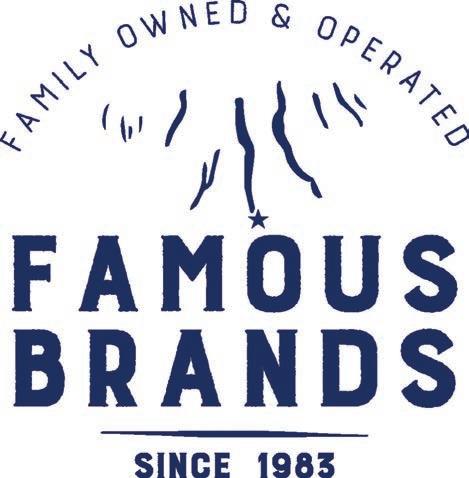
412 N. Franklin St. • Watkins Glen, NY 14891
412
Mon-Sat 9am-8pm • Sun 10am-8pm


hillsides. The adults respect the fences. They’re very alert, so predators are not a big problem. They’re not skittish. The moms take good care of the youngsters—sometimes one adult cow is designated the nanny and keeps an eye on several kids while the other moms graze in peace. They’re polled (no horns), and they’re not fussy eaters, but they do grow slower than commercial breeds.
“We do occasionally cross with Angus and Herefords, but this is predominately a purebred herd,” Terry says. There is a bull, sometimes two, on the premises, as “AI [artificial insemination] doesn’t fit our schedule.”
The finished product is tender, with marbling, and they sell quite a bit of it. “We don’t finish on grain,” says Terry. “We have nothing against it, but we don’t do it.”
The Livestock Conservancy lists the breed as “recovering.”
A Little Sheepish
“They say Henry VIII would only wear socks from Shetland wool,” says Nicki Seeler. If you’ve ever felt Shetland wool, you know why. It’s unbelievably soft.
“I’ve always wanted to learn to spin—since I was a little girl,” Nicki says. And she wanted sheep.
“I did the research,” she says, and decided on the short-tailed Shetlands. “I did not want to dock tails. They are friendly. They don’t eat a lot of grain. They’re easy lambers.”

Well, most times. Marian, one of Nicki’s Shetland ewes, had some trouble with her twins, Willow and New Moon. Both went into the birth canal at the same time, Nicki explains. Willow’s head and legs had pushed New Moon up against Marian’s pubic bone. She eventually delivered the babies, with help from Nicki, who says “I won’t breed her again.”
“She’s a darn good ewe. I love her fleece. It’s exquisite. She’ll be a fiber-only ewe now—she’s a very soft sheep.”
The Shetlands are an archipelago of about 300 islands, many uninhabited, off Scotland’s northeast coast. The sheep of the same name are small, fine-boned, hardy, slow-growing, and long-lived, and are descendants of the Northern European short-tailed sheep, traditional breeds that were believed to be some of the first sheep brought to Europe by early farmers.
Their more recent ancestors probably came from Scandinavia as long as 1,000 years ago—Norway is only about 140 miles east of the Shetlands Islands, so it’s probable that Vikings were regular visitors. Shetlands are believed to be a type of Scottish Dunface, a breed now extinct. Up to the Iron Age, about 1200 BC to 550 BC, most sheep in the British Isles were small and short-tailed, and the males had spiral horns. The ewes are usually polled. These short-tailed sheep, for reasons not clear, were eventually displaced by longer-tailed breeds, and ended up in less-accessible areas like the Shetlands. Historically they were not exported, though Thomas Jefferson kept a small flock of them. Most of the breed now in North America descended from a 1980 importation of thirty-two animals into Canada. While they’re used as meat sheep, they’ve always been prized for their fleece. Shetlands are “dual coated,” which describes their coats of long, strong outer fibers and a soft, light undercoat. Cora, another of Nicki’s ewes, has a comfort factor rating of almost 90 percent. Comfort factor, Nicki explains, is a measure of how soft
10
Breeding continued from page 9 See Breeding on page 12 Famous Brands began in 1983, offering
brand” clothing and footwear at below retail prices. Since that humble beginning in a tiny storefront, we have grown to 30,000 sq. ft. covering 3 floors and half a city block, becoming a destination store for
“famous
Open Year ‘round www.famousbrandsoutlet.com 607-535-4952 Famous Brands began
1983, offering “famous brand” clothing and footwear at below retail prices. Since that humble beginning in a tiny storefront, we have grown to 30,000 sq. ft. covering 3 floors and half a city block, becoming a destination store for millions of visitors and locals alike.
N. Franklin St. • Watkins Glen, NY 14891
in
Open
607-535-4952
*Subject to change based on NYS regulations. www.famousbrandsoutlet.com












3708 Mathews Road, Burdett @ Vineyard Villas (607) 210-2677 hectorhideaway.com For reservations, call 607-535-2014 WWW.SENECALODGE.COM 70 Years of Hospitality Cabins • Chalet Style A-Frames • Motel TV • WiFi • Air Conditioning BREAKFAST & DINNER SERVED 7 DAYS A WEEK World-famous Tavern Room - 6 Brews crafted on site Finger Lakes Finger Lakes Boating Museum Boating Museum 8231 Pleasant Valley Road Hammondsport, NY 14840 607 - 569 - 2222 www.flbm.org Visit us! open daily - over 100 boats on display - boat restoration shop - activities for the whole family! Cruise with us! Keuka Lake cruises aboard the historic Pat II depart daily from Depot Park, Hammondsport! welcome to FINGER
Building higher quality furniture without higher prices! We moved! Now at 3607 State Rt. 14A, Penn Yan, NY 11/4 mile north of the Windmill • 315-536-1146 Mon & Thurs 7am-5pm, Fri & Sat 7am-6pm, closed Sun Tues, Wed, & evenings by appointment *closed Ascension Day - May 9* Celebrating 25 years in business May 10 & 11 Free coffee & donuts 10% off in gift shop excluding furniture
LAKES
Liberty book Shop
the fleece feels. Texas A&M University (check it out at sanangelo. tamu.edu) does the rating. With the wool from her flock of twenty, she makes mostly hats and mittens.
When she’s talking about the sheep, she stresses the importance of genetic diversity and “saving the old-world genetics.” She keeps two rams, but she’s also a proponent of AI to “have a healthy gene pool.” Most of her lamb customers want them for pets, and they make good ones. The members of her flock are great examples. They’re curious, some love to have their heads scratched, and they’re happy to come up to newcomers for a bit of interaction.
Used, Rare and Out-of-Print Books. Your source for unusual books on any subject. Browse our in-stock selection of over 40,000 hardcover books and paperbacks.




Sunday, June 2, 2–5 p.m.
She mentions that Shetlands would be an ideal breed for grazing on large solar farms, eliminating or reducing the need for mowing or using chemicals on the foliage. Unfortunately, she says, there isn’t a market for that much wool. Yet.
The Livestock Conservancy lists Shetlands as “recovering.”
DIY Chicks
Anyone who’s had the pleasure of having a backyard chicken flock knows chickens are pretty smart about some things. They know to duck and cover when a hawk flies over. (Smarter than ducks who don’t know when to chicken and cover.) They know there are sunflower seeds under the birdfeeder up by the driveway. They know when it’s time to go back into the coop at the end of the day. My rooster searches the yard for tasty bits of whatevers on the hens’ behalf. When he finds something, he makes a few clucks, and the hens come running. During one outing, the girls were busy with something they had found on their own and were ignoring him. I watched him pick up a sliver of apple core I’d tossed out, or maybe it was a chunk of bread, take it over to them, drop it, and speak his piece. Clearly it was, “Hey, over here is the good stuff I found for you. Come on.” They did. It’s his job to watch out for them, and he takes it seriously.
De-beaked chickens in a building with a few thousand other chickens aren’t bred to know how to take care of themselves. They’re bred to lay eggs as quickly as possible, or to grow at an unnaturally fast rate. They’re prone to disease, so they need lots of medication. I’ve always had a mixed flock with some heritage breeds—Dominiques, Australorps, and Orpingtons—and some hens have lived for six or seven years. Commercially raised chickens don’t last nearly that long, and why would they want to? A poultry barn is not a nice place for chickens to live.
And while it’s true that not all consumers want what heritage breeds have to offer, Jeannette feels somewhat positive about the resurgence of small farms stocked with tradition.
“There are more people raising their own food, and there is a tremendous interest in chickens, sheep, and wool,” she says. “We call them victory gardens on four feet.”
And sometimes two feet. She cites San Diego’s Presidio dig, which unearthed, among other things, chicken bones. Domestictype chicken bones. The theory is that between 1769 and 1835, domestic chickens provided an important source of protein for the early European residents of what would become California.
“Chickens can save the world,” says Jeannette.
They might need a little help with the infrastructure and staffing, though. Even pre-covid, there was a shortage of local slaughter,
12
Breeding continued from page 10 See Breeding on page 40
p.m. SUN 1–4 p.m. Closed July 2–5 gallery.pct.edu FREE ADMISSION
reception
TUES–THUR 10 a.m.–5
May 30–July 21, 2024
1
www.TheLibertyBookShop.com
East Park St., Avis, PA 17721 • 570-220-2947
Free
HOURS: Thurs
(or by appointment, feel free to just call)
DAY SALE:
All books
off
National Search Service for books not in print. Worldwide shipping!
& Fri 10-6; Sat 10-3
6
JUNE 6-8, 13-15
20-50%
Avis Yard Sale Day is June 8!
Take a Walk on the Red Carpet
At The endless Mountain Music Festival
THURSDAY, JUNE 6, 2024
6:00 PM • PENN WELLS HOTEL

WINE, BEER, & DINNER BUFFET
LIVE AND SILENT AUCTIONS
TRIPS, EXPERIENCES, CIGARS & MORE!
$75 per person
Corporate Table Sponsorship Options:
$875 — Best Picture Table: Includes 10 Tickets, Logo & Name Recognition at the Event, Champagne Included.
$725 — Best Original Score Table: Includes 8 Tickets, Logo & Name Recognition at the Event.
Please RSVP by June 1, 2024


July 29, 2024
Tyoga Country Club
Wellsboro, PA

• Prizes given to the top three teams.
• Numerous individual prizes awarded for closest to pins, long drives & putting excellence.
• Fifty/Fifty Chipping or Putting Contest additional individual prizes via drawing.
• Make up your own foursome, or we can place you in a group.
• Entertainment & Picnic Dinner at play competition.
• Music Festival events take place in the Northern Tier of PA and Southern Tier of NY from July 19 to August 4, 2024.
SAVE THE DATE
A
Night at the Oscars
AUCTION
Stephen Gunzenhauser - Artistic Director
WWW.ENDLESSMOUNTAIN.NET 570.787.7800 Limited to 120 Players!

The Alchemy of Farmstead Cheese Happy Cows Make Richer Cheese at Backroads Creamery
By Caleb Williams
At the end of the day, it’s all cheese. And at the beginning of the day, it’s all cows and milk. What happens during the day—the alchemy of turning milk into cheese—is determined by bacterial cultures, temperatures, cooking times, and curing times, all gently guided by cheesemaker and new owner of Backroads Creamery in Ulster, Kirsten Feusner. The current Backroads menu of cheddar, feta, mozzarella, and flavored cheese curds all feature textures and tastes unique to this small-batch creamery. They are, emphatically, not like the cheeses produced by the ton in large factories.
At an early age, Kirsten knew she wanted to work in the agriculture sector. Having come up through the 4-H program as a youngster, she had been showing cattle for several years at all the fairs and shows, and
one of her Jersey cows won a Grand Championship Premier Junior in Pennsylvania. The next step was the regional show, competing against other state champions. No sooner had Kirsten arrived at that highly competitive regional show than an astute cattleman from California bought her Jersey cow—right off the trailer—for a significant amount of money by any standard: over thirty thousand dollars. The cow went on to win a Grand Championship award at that show. This was right before covid, and that transaction led to several years of Kirsten working with that buyer and trucking high-value cattle to fairs and shows all over the United States. It was during one of these trips that she had her first exposure to farmstead milk processing. She was at a farm in Connecticut that processed its own milk. Her thought at the time was,
“Hey! This is pretty cool!” She was soon enrolled in and earning a bachelor’s degree from Penn State’s online course in agricultural business, which, she says, is the foundation for all her subsequent success.
It was at a cattle show when Kirsten met Amanda Kennedy, who had inaugurated the Backroads Creamery Cheese brand, and who approached Kirsten about buying her business. After a couple month’s apprenticeship, the equipment was moved to Kirsten’s newly built processing room, located on the other side of the milk house wall in her mother’s milking parlor. Kirsten began making her own cheese in July of 2023.
She buys all the milk for processing from her mother, Denise Feusner, who had started her dairy farm in its present location
14
Caleb Williams
See Alchemy on page 16
The quality of cheese is always strained: Kirsten Feusner adds more curds to the stainless-steel cheese forms lined with cheese cloth to make mozzarella.




- SEPTEMBER 3

15 THE PHOTOGRAPHY OF
111 CEDAR ST, CORNING, NY | ROCKWELLMUSEUM.ORG
DISTRICT
WILLIAM WEGMAN
EXHIBITION OF PHOTOGRAPHS ON VIEW MAY 24
GAFFER


continued from page 14
in 2016. Kirsten buys about 25 percent of the farm’s total milk production to process, at a price above the market. The dairy herd of thirty cows is mostly Jerseys, with just a couple Ayrshire and red and white Holsteins mixed in. Denise and Kirsten like to keep the herd small, since their animal husbandry goals emphasize a close personal relationship to, and the health of, the individual animals, whereas a larger herd would not allow the kind of care the family seeks to provide.

















































Most cheese is made from the coagulated casein proteins of milk. Kirsten starts her day by pasteurizing the milk that she will make into a finished product. She uses the long form of pasteurization, which does not heat the milk to as high a temperature as “flash” pasteurization. Once the milk is cooled to cheese processing temperature, a strain of lactic acid bacteria is added to digest the milk sugars into lactic acid, which creates the possibility for long term storage—it is akin to “pickling” the milk. The ingredient that is crucial to the cheese making process is the rennet, an enzyme that coagulates the milk proteins into a solid in about fifteen minutes. Using knives that are sharp on one side, and dull on the other, attached to the concentric stirring apparatus of the cheese vat, Kirsten cuts the curd to form the “curds and whey” that made Little Miss Muffet so famous in the nursery rhyme we all learned as children. The size of the curds and length of time that they are cooked in the whey determines the moisture content of the cheese, which in turn determines how long the finished cheese can be cured before consumption. The feta cheese that Kirsten makes is the most moist, using large cheese curds that are barely cooked to expel moisture. The cheddar curds are not only cut smaller and cooked longer, they are also allowed to form a solid mat that is then run through a “cheddar mill.” This device re-cuts them before adding flavorings to be sold as fresh curd, or put in a cheese form to be pressed into blocks for long term curing of up to nine months for sharp cheddar.
When asked what appealed to her about the idea of farmstead cheese making, Kirsten says that, first of all, she loves working with the cows. On-farm processing allows for the possibility of adding value to the milk the farm produces. And, she continues, there is great satisfaction in the knowledge that she is feeding her neighborhood. Plus, since the milk of Jersey cows is richer than the milk of most commercial dairy farms, the cheese produced here in the farmstead tradition has a richer flavor.
It’s one thing to talk about it, but the taste is worth a thousand words.
Backroads Creamery products can be found in local grocery stores, markets, and restaurants, online thru the Delivered Fresh website, or directly at the farm located at 2590 Codding Road, Ulster.

Caleb Williams lives on a farm in rural Wellsboro, Pennsylvania, with his wife and Pomeranian dog. He once heard that the average American has three careers. He started out as a farmstead cheese maker, then spent a decade as a social worker at Camphill Village, in Copake, New York, and is now a professional portrait photographer. He has achieved his goal of being an average American.
16
754 Canton Street, Troy PA • 570-297-7770 HOURS: Monday-Saturday 8am-5pm hooverclothingstore.com
Alchemy
Kids Apparel
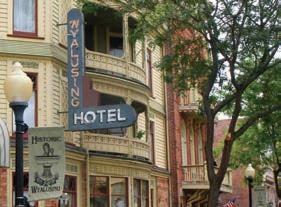




























































17 2024 SUMMER EVENTS Friday June 28 6:30pm Clark Jackson Band Friday July 26 5:30pm Jeremy James 6:30pm Doc Possum Friday August 23 6:00pm U.S. Army Band 10th Mountain Division Fort Drum, NY Events are funded in part by the Bradford County Tourism Agency For more information visit sayreborough.org Dine, Stay or Just Get Away 35 Rooms Restaurant and Tavern (Traditional American family style) Catering Great Rates, GreatFood, Great Attractions Wyalusing Hotel 54 Main Street, Wyalusing, PA 570-746-1204 www.wyalusinghotel.com Your rural home goals are within reach – and our team of experts are here to help. When you’re ready to own your own piece of quiet, give us a call. HOME Sweet HOME NMLS# 452721 Scan Here to Learn More! 50 BALLARD STREET • TROY, PENNSYLVANIA 16947 NOW BOOKING Weddings • Private Parties • Events For more information or to see if your special date is available, visit WWW.TROYSALEBARN.COM Funded by a grant from the Bradford County Tourism Promotion Agency welcome to BRADFORD CO. how do you build your walls? When you build your walls you should expect to get more out of a building product. Buildings today demand reliable, energy efficient building envelopes that provide superior performance benefits to minimize energy costs, reduce carbon emissions, and maximize property value. NUDURA structures offer greater strength, sound, and fire resistance and are why developers and contractors across the world continue to choose NUDURA’s Integrated Building Technology as a proven alternative to traditional building methods. With NUDURA’s 6-in-1 building step, you can build faster and more efficiently, while offering your clients an eco-friendly structure with substantial benefits that contribute to long-term energy savings. Change the way you build your walls. Hoover Hardware 570-297-3445 • 800-251-2156 816 CANTON STREET, TROY, PA MON-SAT 7AM- 5PM HOOVER INDUSTRIAL SUPPLY nudura.com 866.468.6299

Sometimes a Cigar Is Just a Cigar…
…And, in Freud’s Time, It May Have Come from the Northern Tier
Who knows where Sigmund Freud purchased his cigars, but, in the late 1800s and early 1900s, they may have been, at least partially, a product of Tioga County, Pennsylvania. Say what? No, that can’t be right. Tobacco is from the South, red clay fields worked by enslaved African Americans or, after the Civil War, by tenant farmers. Small, log barns. Cash on the stem. I grew up near Winston-Salem; I know tobacco. I inhaled the sickly-sweet smell of cured tobacco as our high school bus passed the R.J. Reynolds cigarette factory each morning.
Not long ago, I Google-stumbled onto a state website—Agricultural Resources of Pennsylvania, c. 1700-1960. There’s a map in the section titled “River Valleys Tobacco Culture, 1870-1930” showing these postCivil War/pre-WWII tobacco farms in Tioga County. The text states, “In Tioga County, it [tobacco] was grown in the Cowanesque
By Chris Espenshade
and Tioga River valleys and along some of their tributaries, for example Crooked Creek, Marsh Creek, Seeley Creek, and Elkhorn Creek.”
For the census year 1900, Tioga County had 1,785 acres in tobacco, yielding a crop of 2.8 million pounds. This was not Grandpa growing a couple of plants for his pipe. Instead, most Pennsylvania tobacco was used as filler leaf or binder leaf for cigars. This tobacco was air-cured, as the heating systems associated with Southern flue-cured tobacco were not found in the tobacco barns of Tioga County.
Looking again at 1,785 acres of the crop in 1900, it is important to note that is not a few large farms. Instead, many farmers each raised a few to a dozen acres of tobacco. This limited scope per farm was due to the backbreaking labor involved in the proper raising of plants. For example, in Tioga Township in 1899, twenty-eight farmers grew one to
fourteen acres each of tobacco. The average acreage per farm in tobacco was only five.
The work required was balanced by the money to be made. For most farms, family labor was invested in their small plot of tobacco, it being the most reliable of cash crops available. There were some tenant farmers working on shares, but they only represented eighteen percent of the Tioga farms raising tobacco.
As for profitability, the 1883 history of Tioga County estimates yields of 1,500 to 2,500 pounds per acre. At ten cents per pound, tobacco provided the greatest return on investment for any crop. The average fiveacre plot would have yielded $750 to $1,000 annually (that’s $23,000 to $30,000 in 2024 dollars). The seed was not expensive; most of the investment was in labor.
In his 2018 history of Pennsylvania tobacco, David Latzko reports “the year of 1899 was the peak year for tobacco farm-
18
Psst, your barn wall is open: One of the few surviving tobacco barns in our region, near Tioga Borough. The walls are a series of shutter-like vents that could be opened to capture the breeze.
Chris Espenshade
ing in northern and north-central Pennsylvania. Tioga County produced 2.8 million pounds, Bradford 1.7 million pounds, and Clinton 1.2 million pounds. The tobacco-growing region extended into the southern tier of New York, with Chemung County producing 2.9 million pounds of Big Flats tobacco in 1900.”
The surviving markers on the landscape are limited to tobacco barns. These are generally large, rectangular, two-story structures with features needed for good ventilation. Tioga County tobacco barns are not the small log barns (typically 16-by-16-feet) found in the South, nor are they banked (built into a hillside) like many other types of Pennsylvania barns. Indeed, the Tioga barn type is relatively nondescript, to the point that many readers have probably passed them by without a second thought.
Tioga Borough was a hotbed of tobacco farming in the late nineteenth and early twentieth century. The 1903 Sanborn Fire Insurance map (the company made maps from 1867 through the 1990s to help insurance companies assess the risk of fire loss) for the borough shows two side-by-side tobacco drying barns, each 150-by-30-feet and two stories tall. These did not survive, but a similar tobacco barn exists about a quarter of a mile west of the main intersection in Tioga. The surviving example shares the same dimensions, and the barn features numerous hinged vents on all its walls. These would have allowed for cross-breezes to help dry the leaves.
With the area’s embrace of tobacco, the farms were joined with other tobacco-related enterprises, including warehouses (Knoxville had two) and small-scale cigar manufactories in many hamlets, boroughs, and cities. For example, Wellsboro had two successive cigar factories. The earliest, Grand Master Cigar Company, was on Main Street from 1872 to 1895. The factory employed close to 100 hands at its peak.
Its successor, the Wellsboro Cigar Factory, was located on the north side of Queen Street, just east of Kelsey Creek, where Packer Park sits today. It is shown on the 1895 Sanborn map. The proprietor was Milford N. Stebbins, and his cousin Melvin Stebbins was manager and salesman. The 1897 History of Tioga County says the factory produced 400,000 cigars in that year. Based on surviving advertising and packaging, the Wellsboro Cigar Factory began with Rattler brand cigars, and in 1910 they added the Rural Home brand.
Tobacco farming in the region had essentially disappeared by 1930. Tobacco agriculture depleted the soils, such that by 1929 farmers had to use 600 pounds of high-grade fertilizer per acre for a successful tobacco crop. The Great Depression caused a significant decrease in demand for cigars. When demand again increased in the 1940s, Pennsylvania production was focused on large family farms of the Amish and Mennonites in the Lancaster area. According to the 1929 soil survey report for Tioga County, “In 1899, cigar-leaf tobacco was grown on 1,795 acres; by 1919 only 181 acres were reported.”
So, yes, Dr. Freud, sometimes a cigar is just a cigar. But it’s also a reminder of a survival strategy for the region’s early farmers.

Chris Espenshade is a professional archaeologist, an outdoor columnist, and a resident of Wellsboro. He is working to add wildlife photographer to his resume.



















19
& Slate
Wolfe’s General Store 14167 Rt. 414 • Slate Run, PA (570) 753-8551 • slaterun.com A unique store nestled among the steep mountains and gorges of Pine Creek! Located at the top of the 2.8-mile Pine Creek Catch-And-Release “Stretch” Remarkable Gift Shop Fully Stocked Orvis Fly Shop Fabulous Deli Hundreds of great gifts for the whole family!
Run Tackle Shop
FUN FOR THE WHOLE FAMILY




meet your something blue Bubbly Candeo lakewoodvineyards.com

Welcome to MOUNTAIN HOME WEDDING
Nick and Lisa Fazzino’s special day was captured by Korver Photography on the grounds of the Gilbertsville Farmhouse in South New Berlin, New York, where love is always in the air and on the shore.
Stories by Victoria
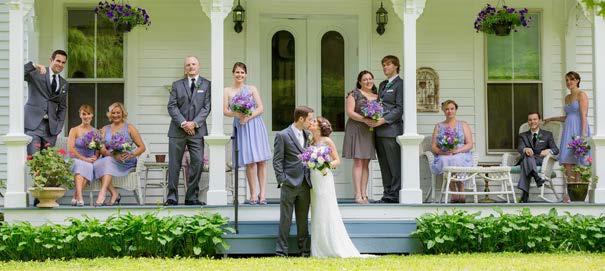

More Perfect Unions
Small Farms Grow a Bumper Crop of Weddings
By Karey Solomon
What could be more emblematic of two people formally pledging their lives to each other than fertile green vistas stretching to the horizon? Farms have been growing in popularity as wedding venues, with working farms and former farms increasingly becoming rustic yet elegant destination wedding sites. The added bonus of farm-to-table cuisine gives guests a true taste of the area.
Silver Creek Farm, 5286 Stillwell Road, Trumansburg, is known for its bounty of pick-your-own strawberries and its variety of fresh vegetables produced for farmer’s markets and more than two dozen local eateries. After building a new barn in 2008, farmer and owner Gordon “Gordie” Gallup was persuaded by caterer Stephanie Holzbaur, owner of Ithaca-based Serendipity Catering, to collaborate on weddings. Gordie is often the source of vegetables Stephanie uses in her menus.
“We’ve done more than 300 weddings,” Gordie says. “As a farmer, it’s ideal, showing people the farm.”
While he offers each couple information on area vendors for things like photography,
music, and flowers, he adds, “I don’t serve as a traditional wedding coordinator. I think of myself more as a firefighter. If something is forgotten, or the caterer needs more ice, I’ll go and get it.”
In Gordie’s experience, those who choose farm weddings are “people with down-to-earth values, seldom anything pretentious. It crosses all spectrums—it’s a destination wedding on a budget. It’s for people who want something informal, relaxed, and want to have a good time.”
Two couples (so far) who came to pick strawberries on their first dates ended up getting married here.
Find out more at silverqueenfarmny.com or call Gordie at (607) 227-4505.
•
For out-of-town friends and family, this type of wedding can offer a genuine taste of the area. And for those wondering specifically what that is, a poll of the Serendipity Catering staff came up with an answer—it’s the distinctive flavors of Finger Lakes wines and cheeses, enhanced with other locally-sourced foods including meat and produce. Farm-to-fork catering is Serendipity’s specialty.
Find them at serendipitycatering.biz or call (607) 273-2145.
•
Gratitude and Grace, 235 Harvey Hill Road, Ithaca, was a working horse farm in the 1870s, but has hosted more than 200 weddings in recent years. Its owner, renowned musician and composer Ron Riddle, bought and lived there as a family home, then began offering it for weddings just over a dozen years ago, after the death of his beloved wife, Andrea.
To do this, he first rebuilt the historic barn. “There are incredible barns in upstate New York,” he says. Inside, chandeliers were added; outside, a parking lot. “I could see it in my vision, even though I’d never done anything like that. This was the last thing I thought I’d be doing! But it was successful from the first year. We’ve had such great weddings here, all pretty memorable. I want to give a couple the best weekend they could possibly have. It makes me happy to make other people happy. I put this place together as a celebration of life, and that’s what it’s been at every wedding. It’s been an amazing journey.”
Ron converted a former garage into a
22
A little bit country, and a little bit modern chic: The Chandelier Barn at Gilbertsville Farmhouse was built by the original dairy farmer seventy years ago; (inset) the porch of the farmhouse at Gratitude and Grace is a great spot for wedding photos.
small home and studio for his own use, leaving the farmhouse, with room for fourteen guests, to the wedding party. He favors a looser, life-affirming structure for celebrations here—the couple may choose any caterer they wish, and the party has no curfew. In these celebrations, he sometimes hears an echo of the legendary gatherings he and Andrea once hosted here. “It’s such a great place for being with people,” he says.
Ron, with advance notice, may be available as a musician with his band, the Riddlers. He’s on-hand to keep things running smoothly from behind the scenes. See more at gratitude-and-grace. com or call (607) 280-0194.
•
“We attract maximalist personalities, people who love to celebrate and entertain, people who are family-oriented, who have tight circles of people they’re close to,” says Sharon Boustani, whose family turned their rural retreat near the small town of Gilbertsville into a picture-perfect wedding venue eleven years ago. After dividing their time for three years between the farm and their New York City home, the family moved in year-round eight years ago to devote their full attention to the wedding business. Their four children are involved as well, with the two oldest concentrating on sales and marketing while their younger two, still in school, work hands-on during the summer.
The Gilbertsville Farmhouse, 336 Coye Brook Road, South New Berlin (it’s east of Ithaca, northeast of Binghamton), offers inhouse catering and four different spaces to enjoy during the event, as well as accommodations for sixty-two guests—some bed-andbreakfast style, some glamping. Their Hayloft venue is used for the rehearsal dinner and the after-party. The Milking Parlor hosts the cocktail hour and serves as a welcome center, as well a place to hold the ceremony if it’s necessary to be indoors. The Chandelier Barn houses the reception. There’s an after-party lounge with a disco vibe. Every wedding here is planned as a three-day event, making this a resort as well as the venue for the celebration. The weekend typically includes snacks, access to woodland walks, optional additional activities like yoga, and visiting the farm’s animals.
“Could be our city roots that influenced this perfect blend,” Sharon muses. “When I came into it, what I fell in love with was the charm of small-town living, the coziness of a less formal space. But at the same time, we didn’t want to let go of the luxuries we’re used to. As we developed the venue and redesigned spaces, we added elegant and chic touches to make a beautifully blended space. We have black-tie weddings here all the time and it doesn’t feel out of place or too formal. We have the best of both worlds. We can enjoy everything this part of the world has to offer without sacrificing.”
Their in-house catering service uses locally raised meat and produce, benefitting their neighbors by buying their products and creating jobs. The business is slated to expand further in 2025 when Gilbertsville Farmhouse begins growing more of their own food and flowers. “It’s a labor of love—that’s the beauty of it,” Sharon says. Learn more at gilbertsvillefarmhouse.com or call (607) 783-9443.

Karey Solomon is the author of a poetry chapbook, Voices Like the Sound of Water, a book on frugal living (now out of print), and more than thirty-six needlework books. Her work has also appeared in several fiction and nonfiction anthologies.
Sew Much More


New
& Gently Used
Formal Wear
BRIDAL • MOTHERS • FLOWER GIRL • PROM • ETC.
Janice Darrah ~ Seamstress
127 N. Main Street • Coudersport, PA 814-335-8681
sewwhizz@yahoo.com

Tues, Thurs. & Fri. 9am-5pm; Wed. 9am-3pm or by Appointment ALTERATIONS






The ideal setting for any type

Party Rentals
Linens - 100 Colors Round, Overlays, Napkins Runners, Chair Covers
Chairs - Black, White
Bistro / Cocktail Tables Round Tables 6 ft & 8 ft Banquet Tables
Backdrops, Pipe & Drape
Custom Designed Centerpieces & Bouquets
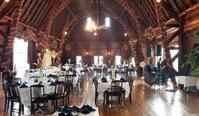





23
of special event. The Barn is the perfect “all-in-one” venue that includes catering! Three packages to choose from with a wide-variety menu. This beautifully restored barn is nestled in the serene hills of ADDISON, NEW YORK two miles north of Elkland, PA For information or to book your special event contact Amy at (607) 368-5092 or Dorotha at (570) 772-6876. The Barn at Hillsprings Farm www.thebarnathillspringsfarm.com
AVAILABLE
607-962-0830 ccPartyCenter.com Simple Elegance Since 1987 Bridal Parties at the sPa Make your sPecial occation MeMoriaBle Emerge Healing Arts & Spa emergehealingarts.com 570-360-8180 129 Main Street, Wellsboro, PA Celebrate with luxurious spa services and a private relaxing space for you and your best. Contact us to customize a package. MOUNTAIN HOME Weddings


To heaven in a flower basket: (clockwise from top left) The flower shed bloomed on Bungy Road in spring of 2023; Dana Beck harvests happiness; stop by the flower shed for a bouquet on Fridays and Saturdays during growing season.

A Beautiful Arrangement Dana Beck Grows Flowers and Family at the Little Petal Co.
By Lilace Mellin Guignard
Dana Beck has created a gorgeous and sustainable life in Bungy, one that gives her kids a childhood of flowers. On a warm day in late April, Dana takes a break from starting seeds in her workshop at the Little Petal Co. to sit on the porch looking across Bungy Road. Off in the distance she can see her parents’ house where she grew up. Lila, nine, and Jack, five, search last year’s flower fields for a bobolink nest before their dad tills soil up with the tractor. She’ll tell you this is the kind of life she and Eric, her husband, wanted.
Dana is from Bungy and Eric is from nearby Mainesburg. After dating in high school, they went their separate ways, with Eric working outside the state and Dana studying to be a dental hygienist. They’d see each other when he came home on visits,
then in 2009 he called from Elko, Nevada, asking her to move out there with him. They married in 2013, and started their family. When Lila was three, they returned to Tioga County and in 2017 bought a cabin in the woods in Middlebury where Dana took the kids foraging for herbs and wildflowers. She planted a small sunny patch with zinnias and was hooked. The couple wanted more land and a life outdoors. “I like to be outside,” she says. “It gives me peace and sanity.”
The Middlebury cabin sold in 2021, and they rented in Wellsboro while looking for their next place. Then word got to her that an elderly neighbor she’d grown up with, George Feathers, had passed away, and that his wife, Dorothy, wanted to sell the place to someone in their community. The property lies along Elk Run, where Dana played as a
kid. George hadn’t done any landscaping, and, other than a field he leased for corn, there was flat lawn surrounding the house, garage, and workshop. Dana says, “It just clicked when I saw the field” of old cornstalks, and her dream of cut flower farming was born. “I knew it would be good soil because of the creek. River bottom soil.”
They weren’t set to close on the property until June of 2022, which would be too late to plant. But in May of that year, Dana had filled their Wellsboro apartment with cups of seedlings, and Dorothy let them prepare the land even though the deal wasn’t finalized. “We had all the beds done and garden planted before we closed on our house,” Dana says. “She was so sweet.”
Dana wasn’t sure if this was going to be
24
Courtesy of Little Petal Co.
See Arrangement on page 26 Still
Blooming Photos










25 OPEN TO THE PUBLIC “A beautiful course with amazing vistas.” Book Your Tee Times Now! 759 Route 660 • Wellsboro, PA 16901 • 570-724-1653 • tyogagolf.com GOOD FOOD • GOOD FRIENDS Check out our many Stay & Play options. Managed by Spirit Golf MOUNTAIN HOME Weddings

Arrangement continued from page 24
more than a hobby. She planted cosmos, sunflowers, zinnias (of course), and 100 dahlias. When ordering the dahlias from small growers, Dana realized how in demand they were and realized there was a market. Dahlia tubers multiply, producing three to ten tubers each year, so Dana’s initial investment would pay off in more than blooms. That first August, Dana sold bouquets at her folks’ place, Route Six Country Shoppes in Mansfield. She also provided bride and bridesmaid bouquets for her first wedding.
Dana describes her aesthetic as cottage style. “I love light, warm colors. I’m not into red flowers, I'm drawn to the peachy tones, creamy yellows, ivory, blushes.” And so are others, it seems, enough that the second year she officially began the Little Petal Co. and added the custom-built flower shed on their property by the road. Her dahlias expanded from 100 to 800 tubers with over fifty varieties. Bouquets were sold at West End Artisan Shop in Wellsboro, where owner Taylor Nickerson says, “The flowers are artistically arranged to spark instant joy. They were a crowd pleaser and always sold out. I hope to have them again this season!”
But mostly Dana sells from her flower farm, staying close and homeschooling her kids. This way they can spend time with Lila and Jack during the day and keep the kids more involved with the chores tied to the land. Once she’s bursting with blooms (July this year, she hopes) the flower shed is stocked with $20 bouquets for pick-up from 9 a.m. to 1 p.m. Fridays and Saturdays, until the first October frost. (Please be ready with cash or Venmo at the stand.) During the week, Dana takes care of custom orders, but Thursday is cutting day. Dana harvests and soaks stems overnight to rehydrate. Friday morning is spent putting bouquets together, and that evening she cuts the Saturday flowers. Do-it-yourselfers are invited for U-pick on Saturday as well—bring your kids! For $25 you’ll get a Mason jar to fill. Private U-pick parties can be booked during the golden hour (shortly before sunset), for which Dana sets up a table and plays relaxing music. Groups are welcome to bring wine and snacks. Though they’ve had one wedding at the farm, they are not a venue. Photographers do rent the field for engagement photos, though, as well as senior pics and family photos.
Being back in Bungy has the benefit of being around family. Dana’s mother-in-law, Debbie, helps weed and harvest, all done by hand. More expansion is planned for 2024. The 800 dahlias Dana planted multiplied to 4,500, many of which she sold to small flower farms and some to local gardeners. She’s put in 100 peonies. “They only bloom for two weeks, but,” explains Dana, “if you pick them when the bud is a little round marshmallow, they will last two weeks in a bouquet.” She’s trying out some English lavender varieties that do well in colder zones, and adding a rose garden. “Roses will not be part of U-Pick,” she says. Future plans involve offering workshops and events.
Visit them on Facebook and Instagram, at thelittlepetalco. com, or drive out to 298 Bungy Road, Mansfield, once the flower shed is open. This year her bouquets will also be sold at Mama Made at 117 N. Main Street in Coudersport. It’s never too late for a childhood of flowers.

26













27 AUGUST 5TH-10TH Love And Theft IN CONCERT FRIDAY NIGHT TICKETS ON SALE AT OUR WEBSITE: www.tiogacountyfair.com FOR A FULL SCHEDULE OF EVENTS SCAN QR CODE 2258 Charleston Road, Wellsboro, PA 16901 Fair Office: 570-724-3196 tiogacountyfair@yahoo.com TRACK EVENTS KOI DRAG RACING Mon., Aug. 5th ★ 7 PM TRUCK & TRACTOR PULL Tues., Aug. 6th ★ 7 PM BULLRIDE MANIA RODEO Thurs., Aug. 8th ★ 7 PM DEMOLITION DERBY Fri., Aug. 9th ★ 7 PM Sat., Aug. 10th ★ 7 PM
For All Your Quilting Needs! HOURS: Tues, Wed. & Fri. 9-4; Thurs. 9-7; Sat. 9-3; CLOSED Sun. & Mon. 664 KELSEY ST., WELLSBORO, PA 16901 • 570-724-4163 • 108” Wide Backing • Batting • Fleece & Flannel • Crafts & Gifts • Lg. Selection of Cotton • NEW Home Décor NOW IN STOCK!
Canyon Country Fabrics


Bookish arts: (clockwise from left) Dave Stabley, Pillars, 2024, mixed media, 24” h x 17” w x 10” d; Carol Kunstadt, Pressing On No. 1, No. 5, No. 4, Homage to Hannah More, 2019, antique sad irons, linen thread, paper: pages by Hannah More dated 1791, 7” h x 14” w x 10” d; Janet Reynolds, Fragile Planet, 2022, discarded atlas, metal globe frame, 18” h x 13” w x 12” d.

Turn the Page
Books Undone Tells Stories at Penn College
Linda Roller
You can be forgiven for being just a little bit squeamish on entering this exhibit at the Gallery at Pennsylvania College of Technology in Williamsport. After all, actual books have been destroyed in every work displayed at Books Undone 2. Most of us were taught as small children to respect and to care for books. As a bookseller for over forty years, I have spent a lifetime caring for books of all ages and types. But librarians, booksellers, book publishers—all of the people involved in what I call “the book arts”—know that there are books that have outlived their time. They no longer have a purpose as a book. Think old textbooks, encyclopedias, as well as many of the reference works so needed before the internet. All that material is now available, updated, and cross
referenced in ways that a set of books cannot do. So, these volumes usually end up in landfills. Re-purposing a book like that into a work of art is, in essence, creating magic out of something that has lost its value.
Six years ago, Penn College hosted its first exhibition of such works in Books Undone: The Art of Altered Books
“For me, the first exhibit [in 2018] was impressive,” explains Penny Lutz, director at the Gallery. Penny’s love of books translated well into this show of books that have been folded, chopped up, twisted, and reassembled in decidedly non-book shapes. “And the public enjoyed the show.” So much so that the Gallery decided to have another such exhibit in the summer of 2024.
“In the summer, a group show brings
more people into the Gallery, when the college is less busy,” Penny says.
For this second show, Penn College selected Scott McCarney as the juror for the exhibition. Scott is an artist, designer, and educator living in Rochester, New York. Penny notes that many of the artists who applied for this juried show did so because of Scott and his reputation in the medium of books. That this show is even larger than the show in 2018, with sixty-four pieces done by forty-one artists from twenty states, is a testament to that.
It’s easy to understand why artists would want to work with Scott on an exhibition of altered books. His art is primarily about books—creating books from the more traditional form of offset printing, to digital
28
Courtesy
The Gallery at Penn College
printing, to creating three dimensional works with books that have been printed. His work is found at the Museum of Modern Art, Victoria & Albert Museum, and Yale University Art Gallery, among others.
A book artist since the 1980s, Scott moved to unloved books a decade later. “I started working with discarded books of knowledge [encyclopedias, indexes, dictionaries, etc.] back in the 1990s when storage and dissemination of that type of information started moving from the analog book into digital space.” In the beginning, Scott received a lot of criticism for his use of old books as the building blocks of a new vision, described as thereby destroying them as a “book.”
“I never harmed a book that contained information that was not available in some other place or form,” Scott says. His art form developed at a time when the conversation was about the end of books and book publishing, and looking toward a future, in just a few years, where all written information was digital, when books and bookstores no longer existed. A future where books were part of our childhood memories and only seen as artifacts of a bygone age. Scott feels that it is
this emotional attachment most of us have to books that makes this art interesting to see. We see the book and the image that the book now shows us.
“Work that understands the continuity of the book as a cultural object while maintaining a contemporary vision I find most successful and satisfying,” Scott says.
The books are altered but the pieces arriving at the Gallery at PCT tell a story as completely as any book can. Some, like the globe, literally take the book and tells the same story in three dimensions. Others, using the text once in a book, educate. Scott calls this the books becoming sculpture.
Though the show has artists from all over the country, one local artist is exhibiting two works. Dave Stabley is no stranger to the area or to Penn College. As full-time instructor in ceramics and wood sculpture for over a decade, Dave still teaches classes at PCT in the mediums he loves.
“My creative process using books as a medium of expression began as I contemplated a pile of different shaped books,” Dave explains. “The physical dimensions of the books interested me the most. I saw them more as 2-by-4 lumber ready to be cut up
into shapes and put back together. As I begin the construction process, I am very aware of positive and negative space, repetition, color, and texture. By also introducing other found objects and recycled materials, I started to see them as more architectural forms.”
Dave’s work was also selected for the 2018 show. Not only are Dave’s sculptures on display, but his sculpture class project for the spring semester is as well. His students filled identical black boxes with black forms, highlighting the spacing and structure. In each of these shadow boxes a book, in some form, is included. The boxes are at the entrance of the exhibition. Other students have created their own altered books as a separate student showing.
Books Undone 2: The Art of Altered Books will be at the Gallery, 1 College Avenue, Pennsylvania College of Technology (third floor of the Madigan Library), from May 30 to July 21 (closed July 3-7). The reception for the exhibition is June 2 from 2 p.m. to 5 p.m.

Mountain Home contributor Linda Roller is a bookseller and writer in Avis, Pennsylvania.

29




















Miss North Penn-Mansfield
Mitchell DANE’S LAWN CARE & LANDSCAPING Mowing • Mulch • Topsoil Firewood • and More This ad brought to you by: 1921 N. Williamson Road, Covington • (570) 244-6394
Shore
Tessa
Miss Jersey
Celia Shemory
Miss New Covenant Natalie Heck
Miss Troy Haven Murray
Miss Canton Kathryne Kilbourn
Miss
This ad brought to you by: 323 S. Williamson Rd, Blossburg (570) 638-2481 Blossburg American Legion Post 572 Private club for members and guests - Join today! Open Mon-Sat: 2:00-10:00 pm and Sun: Noon-8:00 pm Miss
Lawrenceville • (570) 944-0101 cowanesquelakerealty.com
This ad brought to you by: 11564 Route 6, Wellsboro (570) 723-1600 336 US-6 Suite #3, Coudersport (814) 260-1464 howardhannaprofessionals.com Professionals Miss
This ad brought to you by: 2206 S. Main St., Mansfield (570) 463-4320 Lil’ Half Pint
Miss Port Alleghany Olivia Barth
Smethport Julianna Cole
Cowanesque Valley Madeline Millard
Miss
Wellsboro Isobel Anderegg
North Penn-Liberty Tierney Patterson
welcome to Laurel Festival























 Miss Austin Isabella Rees
Miss Greenwood Sophia Jezewski
Miss Mount Carmel Hannah Benedict
Miss Towanda Jocelyn Stroud
Miss Bucktail Alexis Lowery
Miss Millville Ayla Manning
Miss Northeast Bradford Kamryn Edsell
Miss Warrior Run Elle Bowers
Miss Cameron County Aubree Lorenzo
Miss Montgomery Olivia Walk
Miss Northwest Hailey Miller
Miss Williamson Savanna Slaymaker
Miss Central Mountain Sofia Dressler
Miss Montoursville Naomi Alexander
Miss South Williamsport Emma Smith
Miss Williamsport Liliana Cox
Miss Belle Vernon Emma Conklin
Miss Manheim Liliana Kilgore
Miss Muncy Samantha DeWitt
Miss Upper Perkiomen Alexa Sefing
Miss Austin Isabella Rees
Miss Greenwood Sophia Jezewski
Miss Mount Carmel Hannah Benedict
Miss Towanda Jocelyn Stroud
Miss Bucktail Alexis Lowery
Miss Millville Ayla Manning
Miss Northeast Bradford Kamryn Edsell
Miss Warrior Run Elle Bowers
Miss Cameron County Aubree Lorenzo
Miss Montgomery Olivia Walk
Miss Northwest Hailey Miller
Miss Williamson Savanna Slaymaker
Miss Central Mountain Sofia Dressler
Miss Montoursville Naomi Alexander
Miss South Williamsport Emma Smith
Miss Williamsport Liliana Cox
Miss Belle Vernon Emma Conklin
Miss Manheim Liliana Kilgore
Miss Muncy Samantha DeWitt
Miss Upper Perkiomen Alexa Sefing

The House Project
Wellsboro High School Students Hammer Out Careers
By Carolyn Straniere
It’s the age old dilemma: You want a job in the trade industry but it requires experience, and to get the experience you need a job. And tools. But that’s changing at one area school district. Under the leadership of Drew Seeling, certified building, construction, and carpentry teacher at Wellsboro Area High School, students are getting that first-hand, hands-on experience they need for employment.
“When I first began teaching, I shared a room with the agriculture teacher,” says Drew, who started teaching in 1999. “It was basically woodshop with a focus on construction.” The students who chose the carpentry classes built a number of sheds over the years, as well as some smaller jobs. But Drew had a grander vision: to build a house from inception to completion with the students doing the work.
“I wanted to bring the educational involvement to new heights for the students
by allowing them to experience the entire process of building a home.” Drew continues, “I would drive past this vacant lot near the high school every day. It was a hang-out for those who probably shouldn’t have been there and a bit of an eyesore, yet I knew it would be perfect for our project.” The only problem: the property wasn’t for sale.
Eventually that piece of land did become available for purchase, and that’s when the real work began.
“We had to get the school board’s approval, which meant the students needed to pitch the idea of the house project and its benefits,” Drew explains. “The students needed to come up with a presentation and attend school board meetings.” The ensuing PowerPoint presentation tapped students from the business class, who figured out the financials for the project, photography and graphic arts students, who helped develop the presentation, and plant science students
to design the landscaping.
“After the unanimous vote by the school board the students needed to secure the funds for the project,” Drew continues. “They went to our local banks and gave their presentation, and sent out letters to area businesses seeking funds and donations of materials.”
They were able to purchase the vacant parcel in 2017, get the necessary permits approved, and were looking forward to breaking ground shortly thereafter.
“We had secured an excavator and were eager to start when Mother Nature had other ideas,” says Drew. “There was so much rain that year it felt like monsoon season.” He chuckles, now, but, because of the delay, the original excavation company had to back out so a second excavator was hired. When the replacement company, Wellsboro-based GraHill, heard about the project, they donated their time and resources for the students. “It was a blessing in disguise,” Drew says.
32
Wade Spencer
Giving students tools for the future: Rotary members Ardys Boostrom (left) and Carol Druck, watch vo-tech students Sarah Seeling and Levi Marmara under the supervision of teacher Drew Seeling. Sarah and Levi are two of four Wellsboro High School students who’ll receive tools to jump-start their careers from Wellsboro Rotary at the June awards assembly.
Juniors and seniors in the construction program work alongside electricians, plumbers, roofers, and other professionals, while the freshmen and sophomores assist with the worksite and learn about a safe work environment.
“I want to set these students up for real life experiences. They’re learning not only the technical side of construction but also a good work ethic. I see the pride they have in this project,” Drew says. “That’s not to say they don’t make mistakes. They do. But they learn from them. I like to say we ‘fail forward.’ The finished product will be one of quality.”
In addition to the hands-on training these students are getting, Drew has invited a variety of speakers to visit, from union representatives to interior designers. Just recently an employee from Sherwin-Williams explained the wide selection of paints available and their proper usage.
As with any construction project, workers need to be aware that there will be unforeseen circumstances. When covid shut things down, materials were delayed or not available; when they were, the cost had increased considerably, contributing to the completion date being pushed out.
“A construction site is always changing and adjustments need to be made along the way. The students have had to adapt to it,” Drew says. “It’s providing a valuable skill, and knowing what to expect at an actual site will help them with future employment.”
This past April, Wellsboro Rotary toured the approximately 2,000-square-foot house. “They’ve really done a great job,” says Ardys Boostrom, a Rotary member. Partnering with the Wellsboro Area School District and Develop Tioga, Wellsboro Rotary applied to the Rotary International Foundation for a grant so they could give back to the community. “We’re the first county in the state to receive this grant,” Ardys says. “Rotary gives out scholarships for seniors and this year we’re able to give a selection of tools to the four seniors in the construction program through that grant. We split the grant money between three local businesses who supplied the tools, and they’ll be presented to the students at an awards ceremony at the end of the school year.”
Originally a one-family home, Drew utilized the space above the garage for a small apartment. The goal is to have everything completed by June 2025. “We have some flooring and heating that still needs to be installed, as well as some detailing work like trim and painting,” he says. “Once it’s finished, we’ll sell the house and decide what the next large project will be.” In the meantime, students will continue with some smaller community endeavors, such as tackling some much needed work at the homeless shelter in Whitneyville.
Drew estimates about 150 students have worked on the house since the start, with some students working multiple years throughout high school. “It’s been a major undertaking but what these students take with them once they graduate is worth it,” he says.
To find out more about the house project, go to wellsborosd. org. For information on Wellsboro Rotary, go to wellsbororotary.org.

Born in the Bronx, Carolyn Straniere grew up in northern New Jersey, and has called Wellsboro home for over twenty-four years, where she enjoys spending time with her grandkids and traveling. Carolyn lives with her four-legged wild child, Jersey, and daydreams of living on the beach in her old age.


ZIMME R MAN’SCOUNTRY GREENHOUSE
Annuals & perennials Double Ground Mulch Mushroom Soil Geraniums
Mon-Sat 8am-6pm • Credit Cards Now Accepted


33
welcome to WELLSBORO
3541 Rt 660 Wellsboro PA Phone 570-724-3971 Open

From Eels to Eagles Bradford County’s Courtney Oley Paints Towanda Happy
By Maggie Barnes
When Courtney Oley was six years old, she wanted just two things: to be outside and to draw. The native of Rome, Pennsylvania, was ten years old when she knew two things: she was not going to college, and she was going to be an artist.
“Luckily, I was raised by parents who taught us that you could do anything you wanted, if you worked hard enough for it,” Courtney remembers.
An artist is what she became, specializing in animal portraits of all imaginable sizes, from wall murals down to small enough to fit on a water bottle. But not just any water bottle. More about that in a minute.
As a kid, Courtney wanted to see if her art could translate into cash. She decorated
miniature sleds and sold them for Christmas money. The connection between art and income had been made, and there was no turning back. She went to vocational school to earn her cosmetology license and worked in Florida while painting when she could, often commission work from her hair clients. She describes her style as a combination of realism and pop art, drawing the viewer into an interaction with the animal she depicts.
Then in 2020 she made the leap of faith to commit fully to her art. She returned to Bradford County, showcased her work on Facebook and Instagram, and began selling out of state and even internationally. She formalized her specialty as an animal portrait artist during a unique arrangement with the people who make Yeti water bottles.
“They reached out on my social media,” she says, “and asked if I would paint animals on sixty-six Yeti cups that they would ship to me.” Then the catch—they needed it all done in two weeks. Courtney managed to pull it off “with little sleep,” and still gets folks sending her their new cup to be adorned with an Oley original.
All animals are subject material for her, including the family pet. She’s done a lot of dog portraits, often after the passing of a beloved animal, and admits to shedding a few tears with the grateful owners.
After years in Florida, Courtney has a following there and returns to the Sunshine State for painting projects a few times a year. But a year and a half ago, she was approached for a special project right in her home county.
34
Wade Spencer
A brush with greatness: Courtney Oley uses her animal portraiture skills to add color and wild life to the Merrill Parkway along the Susquehanna River.
Towanda Borough Manager Lauren Hotaling had overseen one mural project and wanted another, this one on the Merrill Parkway along the Susquehanna River. A retaining wall had thirty-three panels in need of something eye catching, so Lauren started asking businesses to sponsor one of four panels. The Bradford County Conservation Council raised their hand first and selected an eel for their panel, as they were reintroducing them into the river.
“Once Courtney started, and the community and businesses caught wind of the project, it exploded, mostly on social media.” Lauren recalls. “Where I had once struggled to find four businesses, people were now coming to me.” The demand was so great that the first round of panels were spoken for in weeks, and the team decided to expand it to every available space on the retaining wall, even the smaller panels. The sponsor picks the animal—the only stipulation is that it has to be indigenous to Bradford County.
“Eagles are my favorite to paint because their eyes are so piercing. You can’t help but be drawn in by an eagle’s gaze,” says Courtney. The eels were another story. “I had never seen an eel in real life, but the Bradford Conservation people had a tank of them in their facility. So, I went over there and spent an hour looking at eels and learning about them.” The parkway project posed some logistic challenges. The walkway workspace is narrow, and traffic is a constant concern. Courtney also recognizes her weakness for chatting, and would get caught up in conversation with folks coming to admire her work. “I have traffic cones for safety and now I have signs stuck in them, asking people not to interrupt. It’s for my own good. I like to talk too much!”
Her headphones also dissuade distractions, as she listens to anything from country to rap to classical. “Once I’m in the zone, music without lyrics is best. Then I just lose myself to the art.” If she gets a break with the weather, Courtney can finish some of the panels in two days.
The Bradford Conservation folks are also writing descriptors of each animal. Those will appear on the walking trail fence across the road from the mural. Signs will also thank the sponsors. In addition to the businesses, families and individuals came forward for a panel, sometimes to honor a loved one they had lost.
Lauren says the artist herself was a big part of the draw. “Courtney is incredibly sweet and thoughtful. She incorporates the little touches into the paintings. For one family, she drew in the name of their loved one inside the ear of the fox.”
For another family, she painted the brook trout on their son’s birthday, and the family children came to help with the background.
“Courtney doesn’t just paint beautiful animals,” Lauren adds. “She is caring inside and out that she makes every painting she does so special for all involved.”
“I am over the moon to be doing this project,” Courtney says. “To be a part of this in my home county? It’s such a sweet honor for me.”
Beautifying her home region—one panel, one animal at a time. Follow Courtney on Facebook at OleyArt and on Instagram at oley.art. To discuss a potential project, email her at courtoley@ gmail.com.

Maggie Barnes has won several IRMA and Keystone Press awards. She lives in Waverly, New York.
welcome to BRADFORD CO.






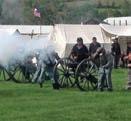











Beds




Oxygen • CPAP/Bipap Machines and Supplies
• Incontinence Supplies
• Power Mobility
• Compression Hosiery
• Braces - Knee, Ankle, Arm
• Mobility Equipment
• Ostomy Supplies
• Bathroom and Home Safety Equipment
• Wound Care Supplies


35
Visit Us Today! visitbradfordcounty.com Email us at cbpa@epix.net or visit cbprogress.org One Elizabeth Street, Suite 3 Towanda, PA 18848 570-265-0937 WWW.TROYVETCLINIC.COM All Under One Roof... SMALL ANIMAL • LARGE ANIMAL Healthy Wellness Exams Exams for Sick Pets Laser Surgical Procedures Portable Digital Radiology Acupuncture In-House Bovine Pregnancy Testing Customer Pet Portal • Online Store House Calls Available Pet Cremation Services Fully Stocked Pharmacies Pet Suplies: Flea & Tick Medication Food, Toys & Treats SERVICES OFFERED: Power Mobility - Oxygen Home Medical Equipment Custom Braces - Diabetic Shoes • Hospital
•
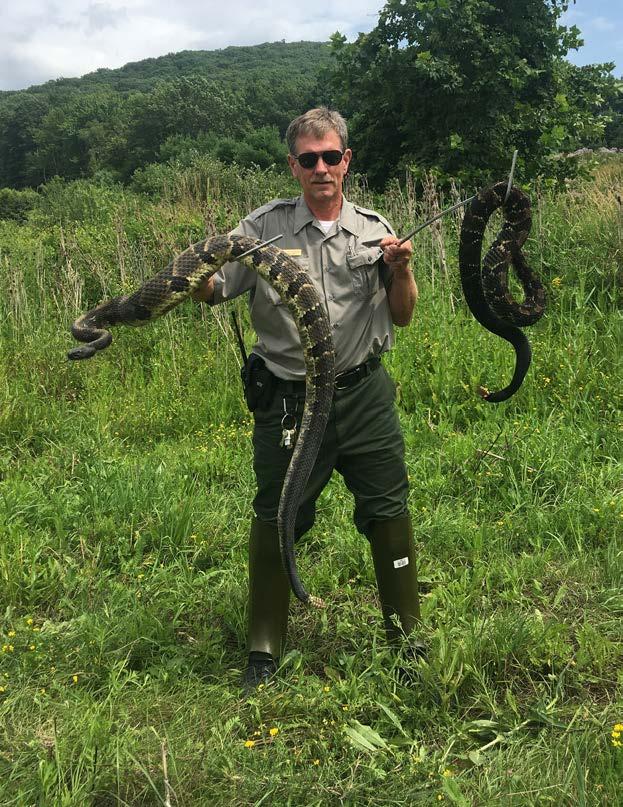
Release the snakes!: Steve Henneman shown here in July 2019 (left) releasing snakes after a presentation at Ives Run, and (right) with the 56.5 inch timber rattler that won the Monroeton Hunt in July last year and led to Steve being the 2023 State Champion Rattlesnake Hunter. He released this snake where he found it as well.

Crotalus Horridus Amicus
Steve Henneman Champions Timber Rattlers
By Lilace Mellin Guignard
Steve Henneman spent the summer of 2012 on a well pad in Renovo working sixteen hours a day, seven days a week, patrolling for rattlesnakes. A Wellsboro elementary school teacher for decades and snake hunter since he was fourteen, Steve was accustomed to working with snakes. This was his first time living around the gas workers away from home, and he was uncertain what to expect, but the burly guys treated him like a hero for doing protection duty. That’s what he was doing alright, but it was the rattlers Steve was protecting from the workers—so both could go about their business.
Some folks think that’s a strange attitude for a rattlesnake hunter—let alone the 2023 state champion rattlesnake hunter—but when it comes to snakes, hunting doesn’t automatically mean killing. Steve has always been an educator as well as a hunter. He releases his snakes where he found them, a must for their survival. According to the
Pennsylvania Fish and Boat Commission, the agency in charge of managing the state’s reptiles and amphibians, Crotalus horridus, the timber rattler, is a candidate for listing as a threatened and endangered species. But the numbers are rebounding. “I think we gain every year because of snake hunts,” Steve says. There are five hunts in Pennsylvania, four of which are run by the Keystone Reptile Club. “They really incorporate the education aspect,” he explains. “The main guy brings lots of other snake species, tame ones. They remove the rattlesnakes from the pit, counting to be sure they have them all. Then they let the kids in the pit with the tame snakes.” He feels strongly about teaching kids not to fear snakes.
Steve is a seasonal ranger with the US Army Corps of Engineers. “I’ll do presentations over at Ives Run,” he says, “and people come up and thank me. They had no idea of the lifespan and habits of the rattlesnakes.
How amazing the creature is to spend six months underground. That they can go miles in one direction, turn around, and come back on the exact same path.”
When the laurel blooms, rattlesnakes emerge from their winter hibernation seeking sunny rocks the way humans gravitate to porches and decks. After shedding, the males and non-pregnant females travel a familiar path to forage for prey. July is when humans and snakes start crossing paths, but Steve wants everyone to know the rattler isn’t moving into your property. If they take shelter in your woodpile, relax, and wait a few days. They’re probably just digesting a rodent that was going to mess with your garden.
The Renovo well pad was built right in the middle of such a path for many snakes, and it was fenced. Steve basically gave the snakes an Uber ride to the other side and let them continue on their way. “I walked them across to the other side and dabbed
36
(2) Courtesy Steve Henneman
nail polish on each rattle, so I could tell if they came around more than once,” he explains. “Only two out of twenty-six were repeat offenders.” If you come across a nuisance snake, don’t move it more than 100 yards away. Actually it’s best to contact the Fish and Boat Commission to move them.
If you see one crossing the road, don’t run it over.
“Big males are what you see crossing the road,” Steve says. “That snake was twenty-five to thirty years in the wild, bothering no one. They’re not going to come after you. I’ve stepped right beside ones I didn’t see, and they’ve never struck. They don’t want to waste the venom.”
If you hear a rattle, know it’s saying I’m here, not I’m pissed. As the Gadsden flag proclaims, Don’t tread on me. But if you hassle them, they will strike. That’s why Benjamin Franklin thought they were a good symbol for our new nation.
Steve has tramped through hundreds of miles over the years searching for snakes. At home, his wife, Patti, can track him on her phone. With a fishing license and a venomous snake permit, rattlesnakes can be legally taken in 2024 from June 8 through July 31, the season starting only after they’ve shed and are less susceptible to injury. The regulations state that a permit holder “may take, kill, or possess timber rattlesnakes at least forty-two inches in length, which have twenty-one or more subcaudal scales.” These are scales on the underside of the tail, and, since males have more, this requirement protects females. Only one is allowed per year. Because some populations are protected, interested hunters should go to fishandboat.com or pick up their free 2024 summary book and study it.
After thirty years of guiding friends, and as his teaching career was coming to a close, Steve decided to compete for the state rattlesnake championship. This required having a snake in three of the four Keystone Reptile Club hunts. Steve caught his largest last year in Monroeton at fifty-six-and-a-half inches, his personal best and a half inch short of the largest ever brought in. His overall score—including ones he’d caught at Noxen, Sinnemahoning (heaviest black rattlesnake and largest timber rattlesnake), and Crossforks (second largest timber rattlesnake)—brought home the prize.
The provisional permits issued to the competitors stipulate that snakes must be released back where they were found by sunset of the last day of the hunt. “Some guys who don’t win get pissed,” he says, “and release it just down the road out of their truck. The snakes will keep searching for their den till it gets too cold and they die.”
No system is perfect, and, let’s face it, people who want to harm snakes aren’t trying to follow regulations anyway. But the hunts are way better than when Steve’s father used to compete and there were no limits on the numbers. His dad won in 1967 in the Morris Rattlesnake Roundup. Steve remembers, “Back then the pit would have 400 or more.”
Now that he’s retired both as a competitive snake hunter and elementary school teacher, Steve says his focus is on passing his knowledge to his grandson, Luke Szentesy. He says when he was young, he was more hunter than educator. But, at sixty-two, that has flipped. At the Tioga-Hammond Lakes, he continues preaching the gospel of snakes: Be not afraid.
“It’s not what you see on TV,” says Steve. Check Tioga-Hammond’s Facebook page for announcements about rattlesnake programs, or call (570) 835-5281.









37
Test with Pearson VUE and The Education Council Register online at www.pearsonvue.com Location: 5 Water St. • Coudersport, PA 16915 Tel:
274-4877 Do you need to take a state certification exam? Meet Candi Hand PCEC’s Award-Winning Director of Testing Services www.pottercountyedcouncil.org Monroeton Rod & Gun Club ANNUAL RATTLESNAKE HUNT Home of Kellogg Mountain Rod & Gun Club 597 Kellogg Road, Towanda, PA • 570-265-5456 July 20 and 21 • Noon to 6pm Horseshoe Tournament • Food & drinks Live music • Snakes on display Welcome vendors, Space is free!
(814)
RATTLESNAKE
UP Morris, Pennsylvania We believe in ecology • this hunt is not sponsored for the etermination of snakes. Sponsored by Morris Township Fire Company One-pitch softball tournament • Entertainment Refreshment stand • Flea market Chicken Barbecue 11:00am •Fireworks Saturday & Sunday, June 8 & 9
69th Annual
ROUND

Minding the Hook
By Dave Nowacoski
The grass is green and growing fast. Dandelions are rampant and the thermometer is reaching for 80 degrees. This can only mean one thing: We have changed seasons. I’m not talking about the winter, spring, summer thing. This is much more important. We have changed from Hunting Season to Fishing Season.
Now for the hunters out there, this is a very sad time. They will be spending the next six months watching videos of other people hunting. Maybe, if they are lucky, they can find a farmer looking to thin out the woodchucks in a freshly mowed field. Other than that, they just have to wait.
On the other hand, this is game time for those who like to fish. Tackle boxes that have been meticulously re-organized over the winter are pulled out and set in the back seat of the pickup. The rods that have already been restrung are donned with new hooks and are always at the ready if someone says “the bite is on.”
I must admit, I am partial to the fishing season. But the reasons have changed as I have grown older. As a little one, it was all about the catching. The more the better.
Didn’t matter what, just a tug on the line was all you needed. When I was old enough to think girls were kind of cute, bragging rights were the goal. It needed to be big, even before the fishing lies grew it an inch or two.
Slowly, as maturity snuck its way in, the experience changed from catching to just fishing. Spending a full day out on the lake with your buddies was more about who had the best story to tell. Sure, we fished, but it was the time spent fishing that was the real goal.
Much later, as I entered still a different season in life, my children became my fishing buddies. When they were little ones, it was time split between trying to keep them from falling into the lake and from putting the fish in their mouths (yes, it happened). But as they grew and they could actually fish with you…well, that was a special kind of day indeed. Some of my favorite photos are from around the lake, proudly displaying some sort of aquatic being and absurdly happy smiles. I thought that would be the pinnacle of my fishing experiences.
But then come the grandkids. This is a new season for me, and I’m so looking
forward to it. Last year I didn’t even bring a rod of my own. I was more than content minding the hook for the boys as they feverishly drowned worms in front of spawning sunnies. I was grinning ear to ear as I slid another wiggly onto the hook, knowing I’d be taking a bite-size panfish off a few seconds later. Didn’t matter. The boys’ laughter and excitement at reeling in another one was all I was after.
My first granddaughter was born just six months ago, but I am already shopping for the perfect pink rod and bobber combo. I can’t wait to mind the hook for her one day too.

David Nowacoski grew up on a farm in East Smithfield and lives just down the road a bit from it still, where he runs WindStone Landing Farms and Delivered Fresh (deliveredfresh. store) with his wife (and high school sweetheart), Marla. He made his kids pick rocks from the garden and believes that sometimes a simple life is a more wise way to go.
38
© Halfpoint / Adobe Stock
Field Notes



































butchering, and processing facilities, especially those that can accommodate the variations in size and availability that go with animals raised in a natural environment. (Go to lancasterfarming.com to read the April 26, 2019, article on the need for local meat processors.) There are several types of federal and/or state inspection options for meat processors, and some are easier for small producers to deal with. It depends on where and to whom you want to sell meat. But don’t let the red tape stop you. After all, if you breed it, they will come.
While Nicki’s Shetland sheep are “not your father’s” sheep, as the advertising catchphrase goes, they may have been your grandfather’s or your great-grandfather’s. And think how the fiber and food from lots of little farms with Shetland sheep or Galloway cattle or a few heritage chickens might help sustain communities. Think of the processing facilities and retail opportunities that might spring up to accommodate those small operations. Our heritage and our collective prosperities were once linked with those breeds, and they could be again.
And, really, for the entertainment value, there’s nothing quite like a backyard of chickens, goats, sheep, donkeys…Well, you get the picture.

40
Open daily 7am to 9pm! 570-662-2972 2103 S. Main St., Mansfield, PA Homemade Specials Daily! Open daily 7am to 9pm 570-662-2972 2103 S. Main St., Mansfield, PA Specialties include Hot Roast Beef Sandwiches, Chicken & Biscuits, and Homemade Pies! Locally Owned Since 1928 2351 Stannards Rd, Wellsville, NY 14895 (585) 593-1280 “Like us on Facebook” to view dates of our upcoming sales and events Featuring 3 Floors, over 9,000 sq. feet, 50+ Vendors, An;ques, Country, Home Décor, Local Ar;sans and More Horseheads Mill Street Market 117 East Mill Street, Horseheads NY 14845 607-739-2531 SUMMER HOURS Tuesday - Saturday 10am to 5pm Closed Sun-Mon www.facebook.com/HorseheadsMillStreetMarket.com Something to crow about: Not only are heritage breed chickens fun to watch, they help provide some food security.
Breeding continued from page 12
Gayle Morrow


Mountain Home SERVICE DIRECTORY















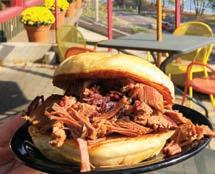




41 BBQ WITH A VIEW! at RTS. 11 & 15 Split SHAMOKIN DAM, PA 570.743.2727 skeetersBBQ.com ROCKY TOP CONSTRUCTION Solomon Kurtz • 6969 Derby Hill Rd, Addison NY • Metal & Shingle Roofing • Vinyl & Wood Siding 518-807-7857 Monday-Friday 8am-4pm 134 Main Street, Wellsboro (570) 724-1917 GMEINERARTCULTURALCENTER.ORG • Diamonds & Quality Jewelry • Bulova & Seiko Watches and Clocks • Fenton, Charms, Trophies and Engraving “We do watch batteries!” Hauber’s Jewelry Farms MarketInc. Pag-Omar 222 Butler Road, Wellsboro, PA 16901 570-724-3333 North End of Rail Trail JF Martin Meats • Local Produce • Subs Salads • Hershey’s Ice Cream • Bulk Foods Eggs • Potatoes • Barnyard Paninis GOLD KEY EQUIPMENT & SERVICE 570-723-7777 Residential & Commercial Laundry Machines Built to Last Over 25 Years and Made in America! Finally...A Top Load Washer with Agitator and Non-Locking Lid!
Enlighten your mind. Heal your spirit Nourish your body. Transform your soul • Functional Health Coaching • Healthy Lifestyle Classes • Cancer Prevention/Recovery Coaching • Aromatherapy & Herbal Classes/ Consults/Products: Featuring “The Scentual Soul” - Fine Aromatherapy EOs and Product Line Sheryl Henkin-Kealey, BS.Ed, CMA, Certified Holistic Cancer Coach Board Certified Health Coach TheSycamore ’ s Spirit Wellness Edu c ationCenter (570) 634-3777 • sycamorespirit@proton.me Visit www.TheSycamoreSpirit.com for class schedules! Facebook.com/TheSycamoresSpiritWellnessEducationCenter New Location: 55 East Avenue, Wellsboro morrischairshop.com 54 Windsor Ln. Morris PA 16938 (570) 353-2735 MOSSY EDGE WATERSCAPES LLC Kevin Fishburn - Water Feature Specialist (570) 439-4840 Ponds, Water Gardens, Fountains, Pondless Waterfalls
BACK OF THE MOUNTAIN
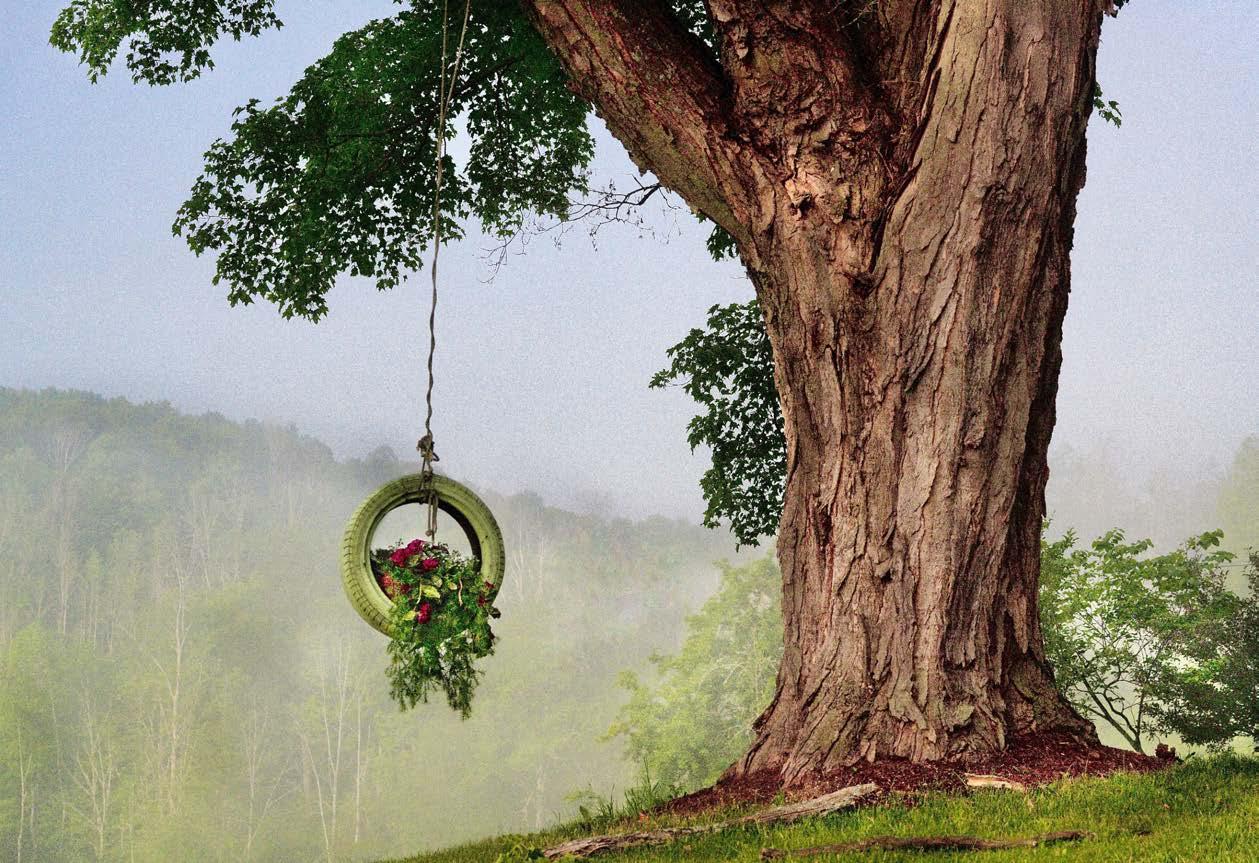
Where the Rubber Meets the Rose
By Linda Stager
y friend Amy has this tree in her front yard. She adds the roses in the swing but hasn’t told me why. Maybe there’s no reason. Still, the contrast between the ancient bark and fresh roses swooning over the rubber tire tells a story. This tree calls to me whenever I see it—in fact I often drive especially to visit it at sunrise just like I did the foggy morning I took this photo.
42
M



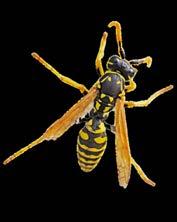















info@ladybugsallpestsolutions.com Contact Us For More Details About Our Comprehensive Seasonal Or Yearly SAY GOODBYE TO PESKY PESTS LET LADY BUGS HANDLE THE REST Expert Solutions for a Bug-Free Home since 1985 100 $ OFF any new commercial service LADY BUGS ALL PEST SOLUTIONS (585) 453-9748 50 $ OFF any new proventative program LADY BUGS ALL PEST SOLUTIONS (585) 453-9748 25 $ OFF any new residential service LADY BUGS ALL PEST SOLUTIONS (585) 453-9748 Coupon good for one service. Expires 09/01/24 Coupon good for one service. Expires 09/01/24 Coupon good for one service. Expires 09/01/24
 By Gayle Morrow
By Gayle Morrow


















 Andrew Lloyd Webber & Tim Rice
Flip Kobler & Cindy Marcus
Andrew Lloyd Webber & Tim Rice
Flip Kobler & Cindy Marcus
































































































































































































































































































